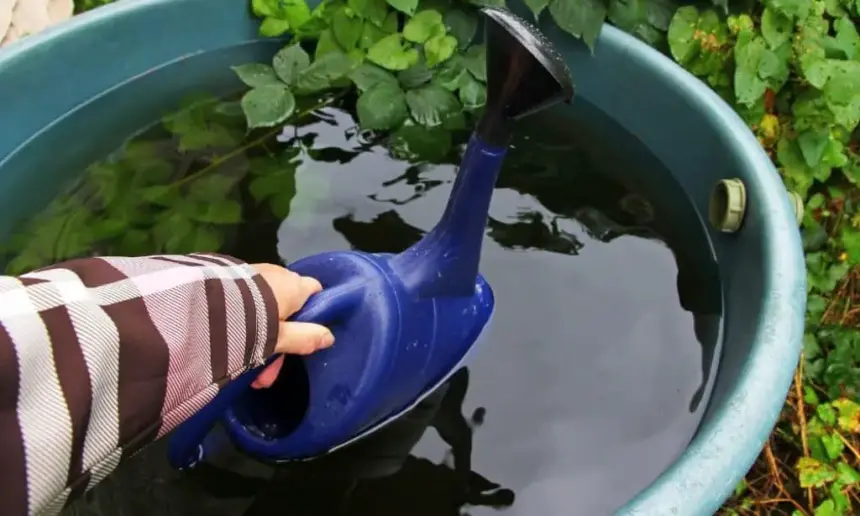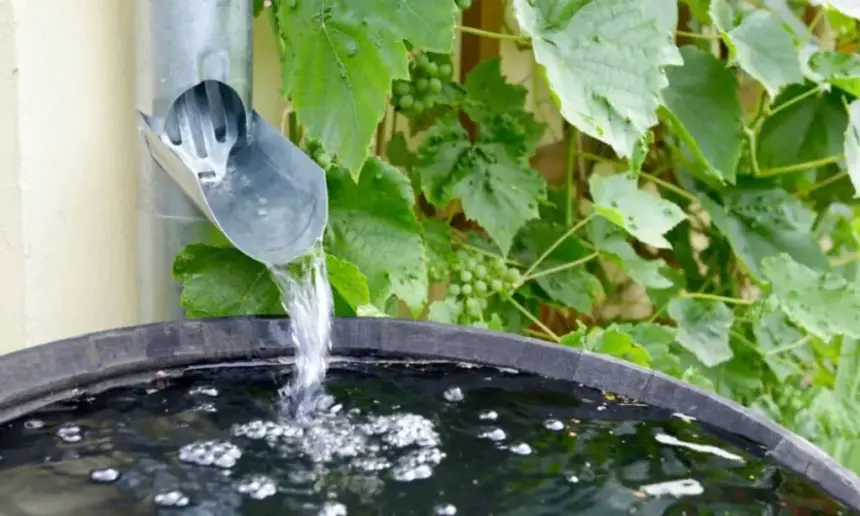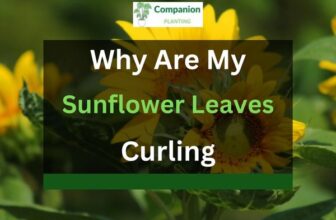How Long is Rain Water Good for Plants? (Solved!)
Over the last couple of years, collecting rain water has become a highly popular method of watering plants.
Rain water harvesting, which refers to both collecting and storing rain water, is an easy, convenient, environment-friendly, and sustainable gardening practice.
The great thing about rain water is that it requires no extra treatment before being used for watering, as it contains no chemicals.
It contains some sediment, but nothing that could be harmful to your plants.
So, rain water is not only a great way to cut your watering costs, but can also help your plant thrive.
However, an issue that concerns many homeowners is how long is rain water good for plants.
Below, I’ll explore if there are limits to how long you can store rain water before it becomes harmful to plants or it retains its beneficial properties for an indefinite period of time.
So, let’s dive in!
Table of Contents
How Long is Rain Water Good for Plants?

The answer to the question of how long is rain water good for plants depends on several factors, including how and where you store it and whether you apply any sort of water treatment.
However, if untreated, rain water, after collecting and storing it, should only be used for watering your plants for about a week.
If stored longer than that, it will likely get contaminated and unsuitable for use.
Using contaminated water, that has been stored for more than seven days, to water your plants, can cause serious harm.
It can hinder the plant’s growth and healthy development, cause leaf discoloration, or, in some cases, even kill the plant.
The time restriction on using rain water is particularly important if you use it for edible plants, as contaminated water will also contaminate the plants and likely result in serious health issues if you eat them.
How Does Rain Water Get Contaminated?

As I already mention, there are several factors that can cause the contamination of rain water after seven or more days of storage.
Some of the most significant reasons why rain water goes bad after this period of time are below.
Algae Growth
Algae growth in tanks containing rain water is one of the most common problems you may face. Collected water contaminated with the presence of algae is practically unusable.
The main reason why algae may develop in rain water is the exposure to light and warm temperatures.
As rain water is commonly stored in barrels or tanks that don’t fully block out the sunlight, it creates a perfect environment for algae to grow and thrive.
Usually, the algae bloom will start to form around a week after you’ve collected water, or faster if the containers are clear.
Using algae-contaminated rain water for your plants will create an algae layer on the soil surface, forming a barrier that makes it harder for water to penetrate through the topsoil to deeper areas.
This means that the plant roots will get less water and become less capable of transferring necessary nutrients for the entire plant.
Animals
Animals, of course, need water, so they will attempt to get to it any way they can, including attempting to get into the rain water containers.
If the lid on your rain water tank or barrel doesn’t fit perfectly or you don’t properly close it, it’s very likely that some animal will try to get in.
This mostly includes smaller species, such as rodents (mice and others), birds, or frogs. Once they get inside, there’s a high likelihood that they will drown.
Needless to say, having the carcass of a dead animal in your container will certainly contaminate the stored rain water.
In addition, if you don’t take care of this situation immediately, the rainwater tank with carcasses inside will attract other harmful pests, such as flies, which produce maggots and create an extremely unpleasant odor.
Mosquitoes

We all know how annoying mosquitoes can be, especially in areas with more humid and hot climates.
However, they’re not just an annoyance but can be one of the major causes of rain water contamination.
The rain water containers commonly have small openings that are more than enough for mosquitoes to get inside.
Once in the tank, the female mosquitos will lay their eggs in the water.
Watering your plants with rain water that contains mosquito larvae likely won’t harm your plants, but will cause other issues.
It will increase the population of mosquitos around your home and the risk of them biting you.
As you probably know, mosquitos can transmit many diseases, some of which can even be fatal to humans.
Plus, while the plants won’t be damaged by mosquitoes, watering them with larvae-infested rain water will create a perfect breeding ground for these insects.
Can the Rain Water for Plants Last Longer?
If you want to keep your rain water good for plants longer, there are a couple of ways to prevent contamination and extend the period in which you can safely use it.
With some of these strategies, rain water can last almost indefinitely and remain safe for watering purposes.
Using the Proper Rain Water Container
[amazon box=”B0B75VRDK9″]
A lot of issues with rain water come from using containers that are not properly equipped to prevent contamination.
The first thing you should look for in rain water container is that it’s made of good material and can be properly closed.
It’s best to use containers made of high-quality plastic, as concrete or metal can rust quickly.
Also, using a tank or barrel with a tight seal cover will stop animals and insects from finding their way into the container, as well as prevent dirt, dust, and twigs from the environment from getting inside.
Regular Cleaning
Buckets for harvesting rain water for plants should be cleaned regularly, especially if they’re larger in size and without a proper lid.
This regular maintenance should help you prevent algae growth and mosquito breeding in the rain water.
The bucket cleaning process is rather easy and won’t require much of your time or effort.
Once a week, simply empty the bucket, scrub it thoroughly with dish soap, and rinse it repeatedly to remove any leftover soap.
Installing a Filter
[amazon box=”B01H10JPMA”]
Most people harvest rain water at the bottom of the gutter. This means that most of the water is coming down from the roof, so it may already be contaminated before it even reaches the container.
The rain water coming out of the gutter may contain dirt, bugs, leaves, bird droppings, and various other contaminants.
To prevent all these potentially harmful contaminants from ending up in the rain water container, you can install a filter to make sure that the water coming out of the gutter is relatively clean.
The rain water filter can be installed either at the gutter pipe or right before the point where water enters the container.
Of course, filters should be regularly checked and, if needed, cleaned to prevent dirt buildup and blockage.
Painting the Container
Most barrels or tanks used for harvesting and storing rain water are opaque. So, they will likely let the light in, even if they’re of darker color.
As already explained, light penetrating into the container creates the perfect conditions for algae growth.
To prevent this, paint your entire container into dark black or brown color, so the light is kept out.
However, be aware that this may create another kind of problem. Dark colors absorb the light, so the sun will heat up the water much faster.
The warm temperature inside the tank or barrel will make the rain water a favorable environment for mosquito breeding.
To deal with this, keep your rain water container in a dark and shady spot and out of direct sunlight,
Dealing with Mosquitoes
[amazon box=”B07PC8CC3B”]
As explained above, mosquitoes are one of the major causes of rain water contamination.
Besides making sure that the container has a tight seal cover, you can also apply another method to deal with insects that still manage to get inside.
All you have to do is put a tablespoon of fish or vegetable oil into the water inside the container.
The oil, as you probably know, will float on water.
This will create a thin layer on the water’s surface that should prevent mosquitos from laying eggs in the rain water and stop mosquito larvae from hatching and breeding.
Note that the oil is harmless to plants, so even if there’s some residue left when watering the plants, it will do them no harm.
Still, this method works best if you have a container with an attached spigot, allowing you to use the water below the layer of oil.
Conclusion
Using rain water for plants is an efficient, cost-effective, and sustainable way of helping your plants blossom.
Besides being eco-friendly, harvesting rain water will provide many benefits for plants, such as balancing the soil, aligning pH levels, and providing some much-needed nutrients.
However, be aware that the rain water will only be good for so long. If you’re not using any kind of treatment, the rain water will remain good and beneficial for plants only for about a week.
After that time, it may get contaminated and do more harm than good.
Still, if you take measures to properly seal the container and keep the most contaminants out of it, you may use the same batch of rain water longer.




